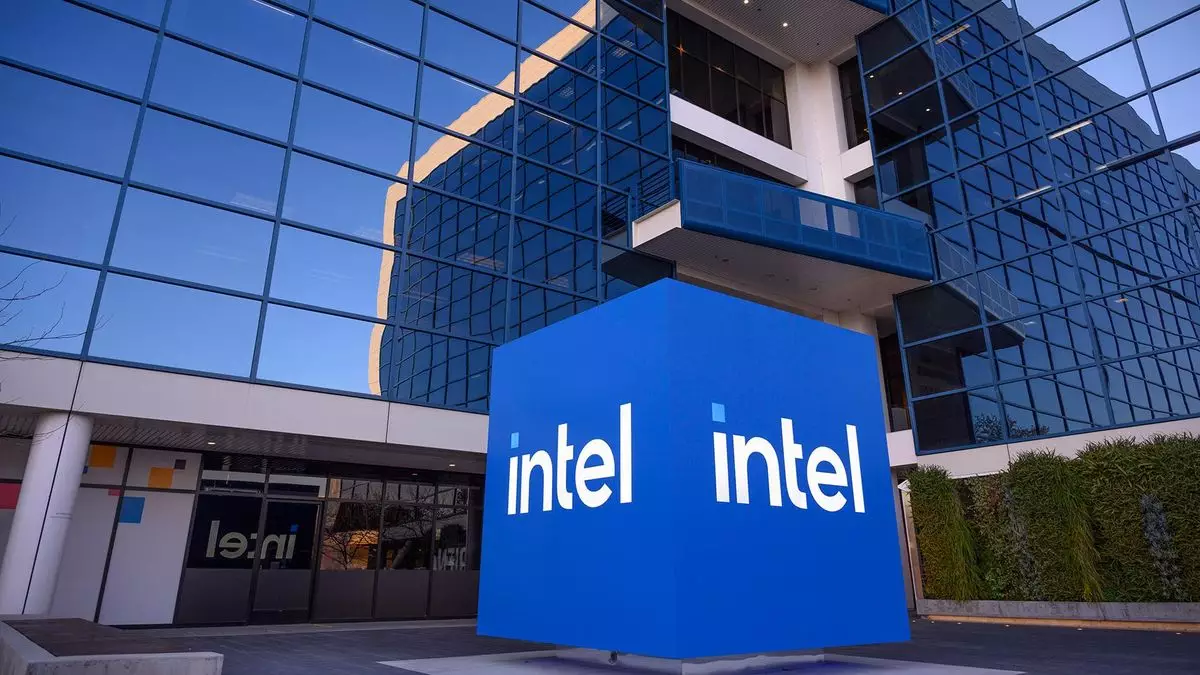Intel Corporation, once viewed as a titan of the technology sector, stands today as a cautionary tale of missed opportunities and strategic follies. The company’s hesitance to seize pivotal moments in its pursuit of growth and innovation has not only reshaped its trajectory but has also altered the competitive landscape of the tech industry itself. As we look back on some critical decisions made in the past, we discern valuable lessons about the importance of foresight and adaptability in the fast-evolving world of technology.
In the mid-2000s, Paul Otellini, who served as Intel’s CEO from 2005 to 2013, proposed the idea of acquiring Nvidia, a relatively small computer graphics firm with a burgeoning potential that many foresaw. At the time, Nvidia’s valuation hovered around $20 billion, making it a forbidden fruit for a company that was riding high on the profits generated by its x86 processors. However, Intel’s board resisted this strategic initiative, which was later described by attendees as “a fateful moment.” With Nvidia now positioned at the cutting-edge of the Artificial Intelligence boom and boasting a staggering market cap of approximately $3.5 trillion, questions abound about what Intel could have achieved had it acted decisively.
While hindsight provides clarity, it is important to understand that even back then some executives within Intel recognized Nvidia’s potential significance to future data center markets. However, this foresight fell victim to the company’s insular corporate culture, one steeped in the myths of traditional dominance. The prior success of the x86 architecture led many at Intel to dismiss diversification opportunities as unnecessary, akin to a creosote bush smothering potential competitors. Consequently, the firm remained inward-looking, oblivious to the shifting paradigm in computing and graphics.
Cultural Stagnation and Strategic Retreats
The internal culture at Intel, described as “the largest single-cell organism on the planet,” painted a picture of isolation and rigid adherence to prevailing business models. Executives were engrossed in maintaining their status quo rather than exploring the uncharted territories of technology that could have secured Intel’s reign in the long haul. Former CEO Craig Barrett’s metaphor about the x86 business further exemplifies this mindset: competition was seen as a poison rather than an opportunity for growth.
In light of this cultural stagnation, Otellini’s proposal to acquire Nvidia was quietly shelved. Instead of a synergistic partnership that could have allowed Intel to navigate the future of AI and machine learning, the company opted for short-term profitability, an approach that is increasingly criticized in today’s volatile tech landscape.
The Aftermath of Missed Opportunities
Fast-forwarding to the current scenario, under the leadership of CEO Pat Gelsinger, Intel finds itself grappling with significant operational challenges. The struggles are varied—from mass layoffs and canceled dividends to manufacturing difficulties—, yet a common thread runs through them: a history of poor strategic planning and decision-making. The idea of creating a hybrid chip architecture (the Larrabee project) was abandoned due to technical and scheduling setbacks, leading Gelsinger to lament a lost opportunity. He recalled that if the company had continued to pursue Larrabee, Nvidia’s current influence could have been drastically diminished.
Moreover, Intel’s reluctance to invest in emerging technologies was evident yet again in 2018 when it opted against acquiring a $1 billion stake in OpenAI. At the time, a 15% share in a company that now holds an estimated value of around $80 billion would have greatly bolstered Intel’s portfolio. This further highlights a worrisome pattern of anti-innovation culture that transcends leadership changes and corporate strategies.
As Intel grapples with its place in the technology landscape, the story of its missed opportunities serves as an urgent reminder of the need for agility and progressive thinking in corporate governance. The rapid evolution that characterizes the tech industry necessitates a robust commitment to foresight and the ability to pivot strategically, rather than clinging to established norms.
Intel can learn from its past by recognizing the shifting tides and adapting proactively rather than reactively. The failure to capitalize on fledgling opportunities has put the once-mighty giant on the defense, questioning whether Intel can reclaim its innovative prowess or if it will remain a cautionary tale for future generations. As history has shown, the most significant gains often stem from taking the shot, rather than merely contemplating the risk of missing.


Leave a Reply